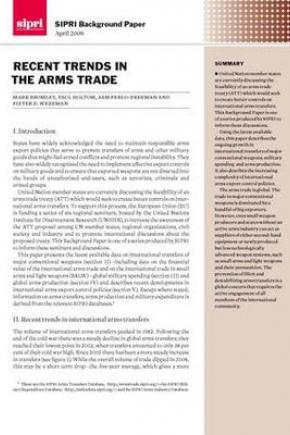Recent Trends in the Arms Trade
Using the latest available data, this paper describes the ongoing growth in international transfers of major conventional weapons, military spending and arms production. It also describes the increasing complexity of international arms export control policies.
The arms trade is global. The trade in major conventional weapons is dominated by a handful of big exporters. However, even small weapon producers and states without an active arms industry can act as suppliers of either second-hand equipment or newly produced but less technologically advanced weapon systems, such as small arms and light weapons and their ammunition. The prevention of illicit and destabilizing arms transfers is a global concern that requires the active engagement of all members of the international community.
I. Introduction
II. Recent trends in international arms transfers
III. Recent trends in world military expenditure
IV. Recent trends in world arms production
V. Recent trends in export control mechanisms
VI. Conclusions




